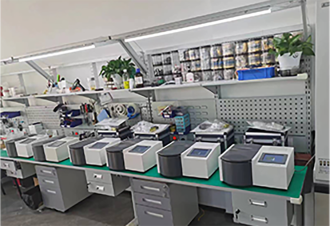 English
English


electrical ir test
Understanding Electrical Insulation Resistance Testing
Electrical insulation resistance testing, commonly referred to as IR testing, is a critical procedure used in the maintenance and assessment of electrical systems. This testing method determines the effectiveness of insulation materials in preventing unwanted current leakage, which can lead to significant safety hazards, equipment damage, and operational inefficiencies. The importance of insulation cannot be overstated, as it serves as the first line of defense against electrical faults.
Understanding Electrical Insulation Resistance Testing
The process of conducting an IR test is relatively straightforward, but it requires specialized equipment known as an insulation resistance tester or megohmmeter. The tester is connected to the electrical circuit and the ground, and upon activation, it generates a high test voltage. The resulting current flow is measured and converted into resistance values. These measurements can provide insights into the condition of the insulation over time.
electrical ir test

One of the primary reasons for performing electrical IR tests is to identify potential issues before they lead to catastrophic failures. For example, in high-voltage applications, small insulation breakdowns can result in arc flash hazards, fires, or equipment damage. Regular IR testing can help pinpoint areas of concern, enabling timely maintenance and ensuring compliance with safety standards.
The frequency of insulation resistance testing can vary based on industry standards and the specific environment in which the equipment operates. In some cases, testing may be conducted annually, while in others, it may be as often as quarterly. Environmental factors, such as humidity, temperature, and the presence of contaminants, can significantly affect insulation quality. Therefore, it is essential to consider these factors when planning an IR testing schedule.
Interpreting the results of insulation resistance tests is crucial for accurate assessments. Generally, a resistance value above 1 megohm is considered acceptable for most applications, but this can vary based on specific equipment and regulatory requirements. It's also important to track insulation resistance values over time to identify trends, which can indicate deterioration or improvement in insulation quality.
In conclusion, electrical insulation resistance testing is an invaluable tool for maintaining the safety and reliability of electrical systems. By regularly assessing the insulation quality, organizations can prevent accidents, extend the life of their equipment, and ensure operational efficiency. As technology advances, the methods and tools for conducting these tests continue to evolve, making them more efficient and easier to integrate into routine maintenance practices. Ultimately, investing in insulation resistance testing is an investment in safety, reliability, and peace of mind in electrical operations.
-
Differences between open cup flash point tester and closed cup flash point testerNewsOct.31,2024
-
The Reliable Load Tap ChangerNewsOct.23,2024
-
The Essential Guide to Hipot TestersNewsOct.23,2024
-
The Digital Insulation TesterNewsOct.23,2024
-
The Best Earth Loop Impedance Tester for SaleNewsOct.23,2024
-
Tan Delta Tester--The Essential Tool for Electrical Insulation TestingNewsOct.23,2024





